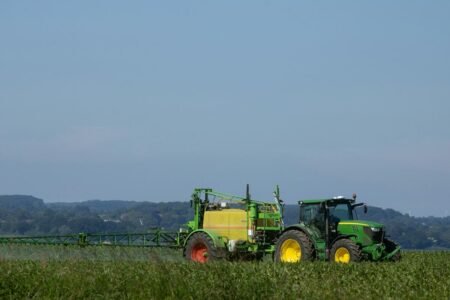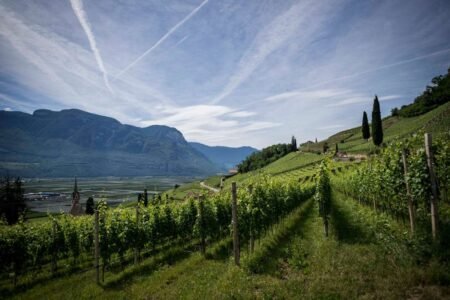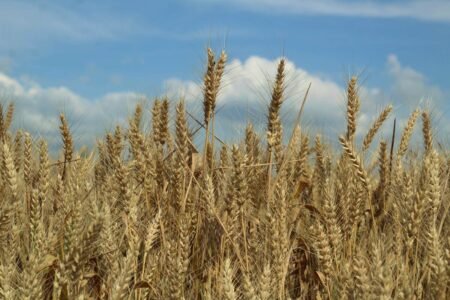All foodstuffs intended for human or animal consumption in the EU are subject to a maximum residue level (MRL) of pesticides in their composition in order to protect animal and human health. The Regulation brings together and harmonises in one text the limits that apply to different human or animal food products and, in addition, it establishes a maximum limit applicable by default.
Advertisement
ACT
Regulation (EC) No 396/2005 of the European Parliament and of the Council of 23 February 2005 on maximum residue levels of pesticides in or on food and feed of plant and animal origin and amending Council Directive 91/414/EEC.
SUMMARY
The Regulation establishes the maximum quantities of pesticide residues permitted in products of animal or vegetable origin intended for human or animal consumption. These maximum residue levels (MRLs) include, on the one hand, MRLs which are specific to particular foodstuffs intended for human or animal consumption and, on the other, a general limit which applies where no specific MRL has been set.
The objective is to ensure that pesticide residues in foodstuffs do not constitute an unacceptable risk for consumer and animal health.
Foodstuffs concerned
The Regulation covers all products intended for human or animal consumption listed in Annex I.
These products are not subject to the set limits if they are intended for sowing or planting, authorised tests on active substances, manufacture of non-food products, or export outside the European Union.
Default limit and specific limits
The maximum pesticide residue level in foodstuffs is 0.01 mg/kg. This general limit is applicable by default, i.e. in all cases where an MRL has not been specifically set for a product or product type.
Some of the specific MRLs listed in Annex II are higher than the default limit.
In some cases, provisional MRLs may be set and should then be listed in Annex III. Provisional MRLs should in particular be set in the following cases:
- for honey and herbal infusions;
- in certain exceptional circumstances of contamination by plant protection products;
- for national MRLs which have not yet been harmonised;
- where new products are listed in Annex I and a Member State requests it, in order to have enough time for a comprehensive scientific assessment and provided that no risk to the consumer has been detected.
Products which do not comply with the fixed limits may not be diluted except in the case of certain processed and/or composite products listed by the Commission (Annex VI).
Exceptions to the limits
Certain substances listed by the Commission (Annex VII) may be authorised even if they exceed their MRL, if they meet the following conditions:
- the products concerned are not intended for immediate consumption;
- controls are in place to ensure that these products are not made available to the consumer;
- the other Member States and the Commission are informed of the measures.
In exceptional cases, products which do not comply with the limits set in Annexes I and II may be authorised by a Member State if the products do not represent an unacceptable risk. The Member State must immediately inform the Commission, the other Member States and the European Food Safety Authority (EFSA) so that the appropriate measures may be taken as quickly as possible (provisional MRL, etc.).
Certain active substances are not subject to any residue limit. These are the active substances present in the plant protection products assessed pursuant to Directive 91/414/EEC (on the placing of plant protection products on the market) and for which no MRL was considered necessary. They are listed in Annex IV, which the Commission is to draw up within 12 months of the entry into force of this Regulation.
Setting, amending and removing MRLs
For a plant protection product to be placed on the market pursuant to Directive 91/414/EEC, the active substances which it contains should be assessed in order to determine the threshold above which their concentration in food products presents a risk for humans and animals.
This Regulation establishes the procedure for MRL applications. Such applications must be submitted to the Member State, which communicates them to the European Food Safety Authority (EFSA).
Risk assessment is the responsibility of the EFSA, which decides on each intended new MRL, amendment or removal (except in the case of removals resulting from an authorisation of a plant protection product being revoked). The EFSA issues an opinion including the anticipated limit of determination for the pesticide/commodity combination, and a risk assessment for cases where the admissible daily intake is exceeded.
Based on the EFSAs opinion, the Commission issues a Regulation to establish a new MRL or to amend or remove an existing MRL.
Checking of MRLs
Based on Community and national multi-annual programmes updated every year, the Member States carry out checks on pesticide residues to ensure compliance with the MRLs. These checks entail taking samples, analysing them and identifying the pesticides and respective pesticide levels present therein.
Context
Prior to this Regulation, each Member State applied its own maximum residue limits for pesticides. Previous European legislation set different limits for different kinds of product: fruit and vegetables (Directive 76/895/EEC), cereals (Directive 86/362/EEC), foodstuffs of animal origin (Directive 86/363/EEC) and plant products, including fruit and vegetables (Directive 90/642/EEC). This Regulation repeals all these Directives, proposing harmonised maximum limits for all foodstuffs instead. It includes the same level of protection for animal feedingstuffs. It is the first time that a common limit of this type is established at European level for all types of pesticide, without distinguishing between categories of food.
The use of active substances in plant protection products is one of the best methods of protecting vegetables from harmful organisms. This use can, however, cause residues to be present in treated products, in animals fed with those products and in honey produced by bees exposed to these substances. Care should therefore be taken to ensure that levels of these residues do not present unacceptable risks for human beings and, where appropriate, for animals.
The Standing Committee on the Food Chain and Animal Health helps the Commission to reach decisions on the maximum limits applicable to pesticide residues. In the Member States, the designated national authorities manage contacts with the Commission, the EFSA, the other Member States and all the stakeholders affected by this Regulation.
Key terms used in the act
Maximum residue limit: maximum permitted concentration of the residue of a pesticide in or on foodstuffs for humans or animals;
Limit of determination: weakest concentration of residue that can be measured and recorded by a routine check using suitable methods.
REFERENCES
Regulation (EC) No 396/2005
Entry into force: 5.4.2005
Official Journal: OJ L 70 of 16.3.2005
Amending acts:
Regulation (EC) No 178/2006
Entry into force: 22.2.2006
Official Journal: OJ L 29 of 2.2.2006
Regulation (EC) No 149/2008
Entry into force: 1.9.2008
Official Journal: OJ L 58 of 1.3.2008
Regulation (EC) No 260/2008
Entry into force: 8.4.2008
Official Journal: OJ L 76 of 19.3.2008
Regulation (EC) No 299/2008
Entry into force: 10.4.2008
Official Journal: OJ L 97 of 9.4.2008
Regulation (EC) No 839/2008
Entry into force: 31.8.2008
Official Journal: OJ L 234 of 30.8.2008
Regulation (EC) No 256/2009
Entry into force: 28.3.2009
Official Journal: OJ L 81 of 27.3.2009
The successive amendments and corrections to Regulation (EEC) No 396/2005 have been incorporated into the basic text. This consolidated version has only documentary value.
RELATED ACTS
Commission Regulation (EC) No 1213/2008 of 5 December 2008 concerning a coordinated multiannual Community control programme for 2009, 2010 and 2011 to ensure compliance with maximum levels of and to assess the consumer exposure to pesticide residues in and on food of plant and animal origin [Official Journal L 328 of 6.12.2008].
Regulation (EC) No 882/2004 on official controls performed to ensure the verification of compliance with feed and food law, animal health and animal welfare rules [Official Journal L 165 of 30 April 2004].
Directive 2002/63/EC establishingCommunity methods of sampling for the official control of pesticide residues in and on products of plant and animal origin [Official Journal L 187 of 16 July 2002].







